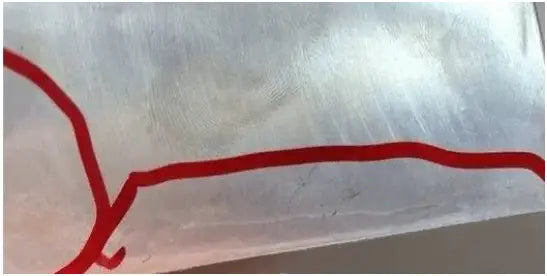Die casting is a metal casting process that uses a mold cavity to force molten metal into a specific shape, similar to the plastic injection molding process. It is particularly useful for producing large numbers of small to medium-sized castings, making it the most widely used casting process.
Die casting produces a smoother surface and greater dimensional consistency compared to other casting techniques. However, if the operation and parameters are not standardized, various defects may result.
1 . Flow marks and patterns
Appearance inspection:
The surface of the casting has stripes that are aligned with the direction of flow of the molten metal. Additionally, there are distinct, non-directional lines with varying shades that differ from the metallic base, and these lines do not follow a specific pattern.
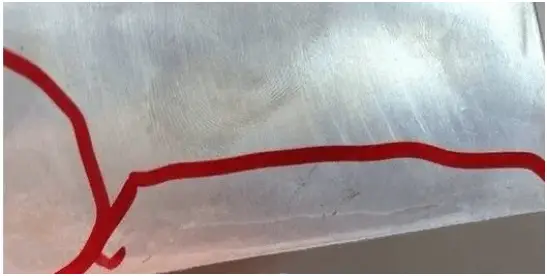
The causes of flow marks are as follows :
1) The mold temperature is too low;
2) The corridor design is not good and the gate position is not good;
3) The supply temperature is too low;
4) Low filling speed and short filling time;
5) The gate system is unreasonable;
6) Poor exhaust;
7) Spraying is unreasonable.
two . Turtle Crack
Appearance inspection:
On the surface of castings, there are marks of a lattice pattern that is either convex or concave, and these marks become more prominent and extend with increasing casting cycles.
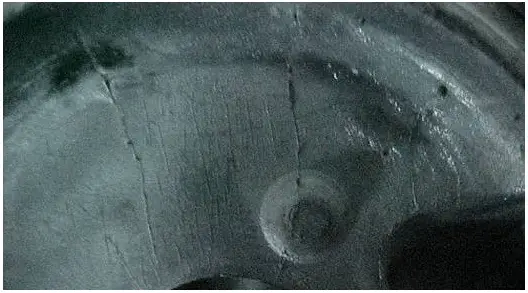
The causes are as follows:
1) There are cracks on the surface of the casting die cavity;
2) The preheating of the casting die is uneven.
3 . Cold insulation
Appearance inspection:
The surface of pressure castings has distinct, irregular and depressed linear lines, which are small and narrow in shape. These lines can be penetrating or non-penetrating. Occasionally, the edges of these lines may appear smooth, but they may also break under external force.
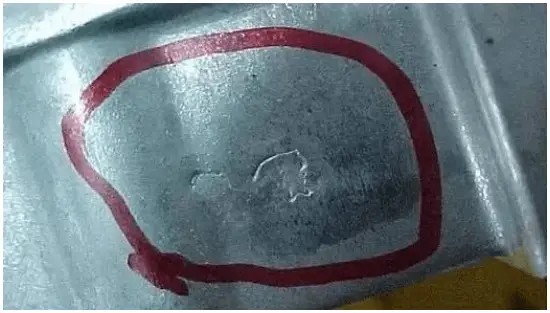
The causes are as follows:
1) The two metal streams collide, but they are not completely fused and there are no inclusions between them, and the bonding force of the two metals is very weak;
2) The pouring temperature or casting temperature is low;
3) The runner position is not correct or the flow path is too long;
4) Low filling speed.
4 . Retreat
Appearance inspection:
There are smooth dents (like discs) on the surface of most thick parts of die casting.
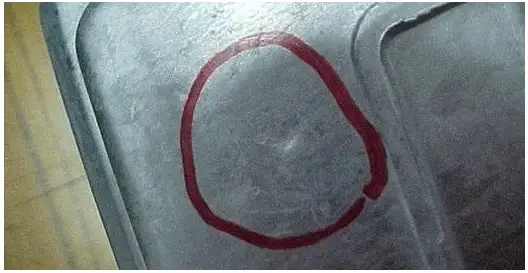
The causes are as follows:
1) Caused by contraction
- The die casting design is inadequate and the difference in wall thickness is too large;
- Inadequate position of the corridor;
- The injection rate is low and the retention time is short;
- The local temperature of the casting die is too high.
2) The refrigeration system design is unreasonable;
3) The mold was opened too early;
4) The pouring temperature is too high.
5 . Print
Appearance inspection:
The trace left by contact between the surface of the casting and the surface of the casting cavity or the step trace on the surface of the casting.
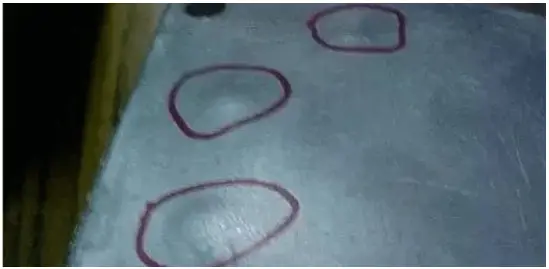
The causes are as follows:
1) Caused by element ejection
- The end face of the ejector rod is worn;
- Ejector rod adjustment length is inconsistent;
- The splicing part of the casting die cavity does not fit well with other parts.
2) Caused by splices or moving parts
- The embedded part is loose;
- Loose or worn moving parts;
- The sidewall surface of the casting is formed by inserts that interpenetrate the movable and fixed molds.
6 . Membership marks
Appearance inspection:
Under the influence of external forces, small flakes can peel off and have a bright or dark gray color.
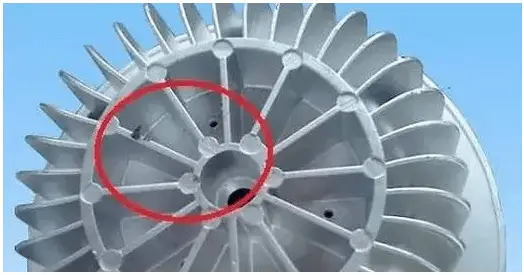
The causes are as follows:
1) There are metal or non-metallic residues on the surface of the die casting cavity;
2) When pouring, impurities are brought in first and fixed on the surface of the cavity.
7 . Delamination (peeling)
Appearance inspection or damage inspection:
There are obvious layers of metal in the casting.
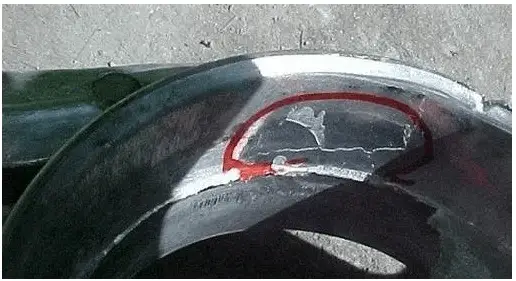
The causes are as follows:
1) The rigidity of the mold is not enough and the jig shakes during filling;
2) In the injection process, the punch crawls;
3) Inadequate design of the corridor system.
8 . Friction ablation
Appearance inspection:
The surface of die casting has rough surface in some places.
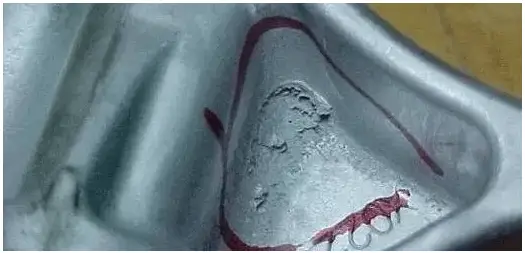
The causes are as follows:
1) The position, direction and shape of the input caused by the casting die are not suitable;
2) Due to the casting conditions, the molten metal at the inlet is violently eroded and the cooling of the part is not sufficient.
9 . Erosion
Appearance inspection:
There are convex marks or lines on the local position of pressure castings.
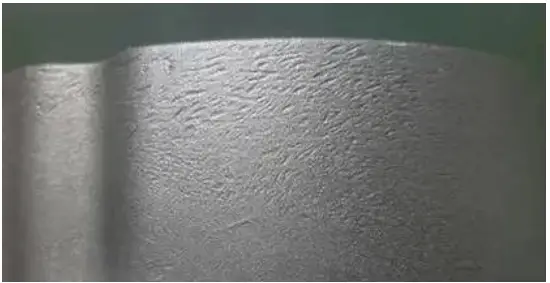
The causes are as follows:
1) The position of the gate is inappropriate;
2) The cooling condition is not good.
10 . Crack
Appearance inspection:
The surface of the casting cracks when placed in alkaline solution, appearing as dark gray lines. These cracks follow a linear or wavy pattern and have narrow, elongated grains that tend to worsen under external stress.
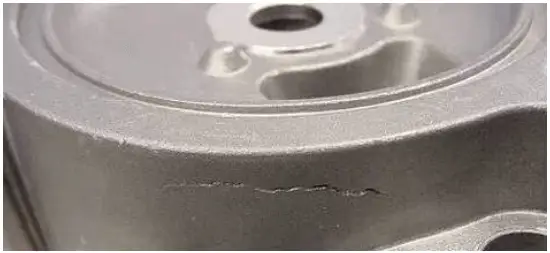
The causes are as follows:
The results show that the iron content is too high or the silicon content is too low, leading to high levels of harmful impurities in the alloy that reduce its plasticity. In Al Si alloy and Al Si Cu alloy, the zinc or copper content is very high and in Al Mg alloy, the magnesium content is very high. The copper content in Al Si alloy and Al Si Cu alloy is also very high.
In addition, the mold holding time is too short, the holding time is too short, and the wall thickness of the casting changes abruptly. The local clamping force is too large and the force is uneven during the ejection process.

